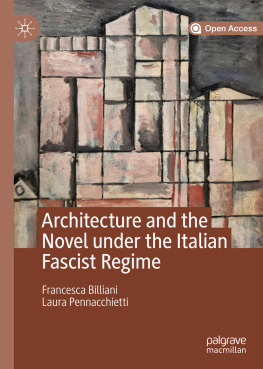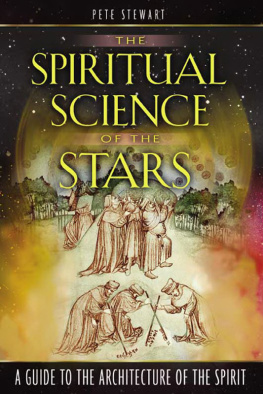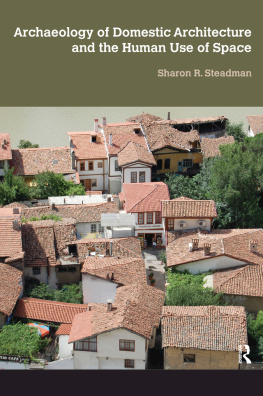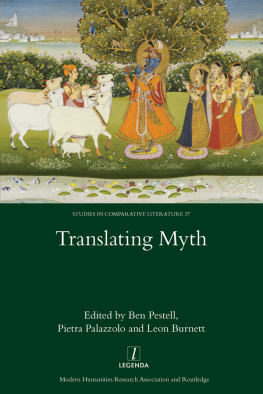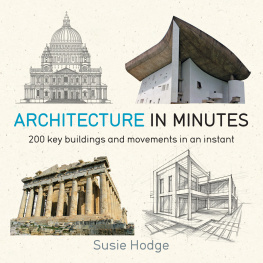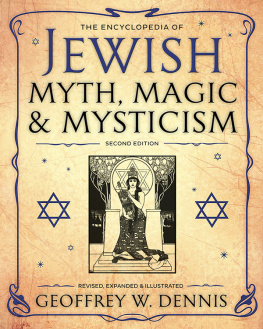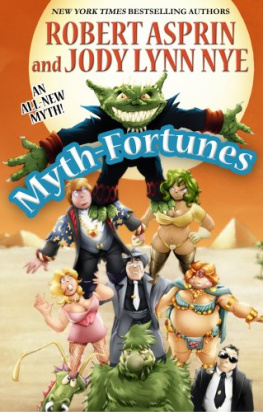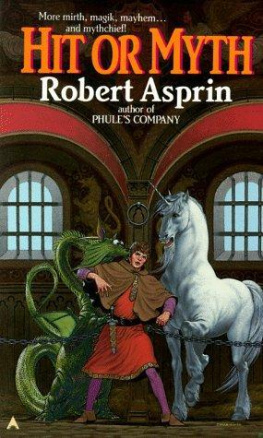William Richard Lethaby - Architecture, Mysticism, and Myth
Here you can read online William Richard Lethaby - Architecture, Mysticism, and Myth full text of the book (entire story) in english for free. Download pdf and epub, get meaning, cover and reviews about this ebook. year: 1975, publisher: George Braziller, genre: Religion. Description of the work, (preface) as well as reviews are available. Best literature library LitArk.com created for fans of good reading and offers a wide selection of genres:
Romance novel
Science fiction
Adventure
Detective
Science
History
Home and family
Prose
Art
Politics
Computer
Non-fiction
Religion
Business
Children
Humor
Choose a favorite category and find really read worthwhile books. Enjoy immersion in the world of imagination, feel the emotions of the characters or learn something new for yourself, make an fascinating discovery.

- Book:Architecture, Mysticism, and Myth
- Author:
- Publisher:George Braziller
- Genre:
- Year:1975
- Rating:5 / 5
- Favourites:Add to favourites
- Your mark:
- 100
- 1
- 2
- 3
- 4
- 5
Architecture, Mysticism, and Myth: summary, description and annotation
We offer to read an annotation, description, summary or preface (depends on what the author of the book "Architecture, Mysticism, and Myth" wrote himself). If you haven't found the necessary information about the book — write in the comments, we will try to find it.
Architecture, Mysticism, and Myth — read online for free the complete book (whole text) full work
Below is the text of the book, divided by pages. System saving the place of the last page read, allows you to conveniently read the book "Architecture, Mysticism, and Myth" online for free, without having to search again every time where you left off. Put a bookmark, and you can go to the page where you finished reading at any time.
Font size:
Interval:
Bookmark:
'They entered an apartment containing nothing except a black painting representing a woman. Her legs reached to the top of one of the walls; her body occupied the entire ceiling; from her navel hung suspended, by a thread, an enormous egg; and the remainder of her body, her head downward, descended the other wall, to the level of the pavement, where her finger ends touched,'SALAMMBO.
THE late William Burges built for himself a house strange and barbarously splendid: none more than he could be minutely intimate with the thought of old art, or more saturated with a passion for colour, sheen, and mystery. Here were silver and jade, onyx and malachite, bronze and ivory, jewelled casements, rock crystal orbs, marble inlaid with precious metals; lustre, iridescence and colour everywhere; vermilion and black, gold and emerald; everywhere device and symbolism, and a fusion of Eastern feeling with his style.
In his own bedroom the bed and other furniture is vermilion heightened by crimson glazes. Over the mantle a syren combs her long gilt hair, looking-glass in handthe mirror no make-believe. The ceiling has red beams crossing a black field studded with small convex mirrors, two inches across, surrounded by gilt rays, the mirrors giving back the candle-light like stars in the midnight sky. The hangings are Eastern embroidery, and the pictures Persian miniatures. The ceiling of the next room is even more extraordinary and mysterious; it is divided into four squares by heavy beams, at the middle point of which there is a convex mirror as large as the moon: each of these squares is crossed by diagonal ribs of bright flamingo red, and a circle is drawn around the points of intersection, from which hang emus eggsfour in alllarge, almond-shaped, and matchless green. They vibrate as you enter the room.
Burges had been to Constantinople, and there a few years ago hung from the dome of Sta. Sophia, 'the fairest and noblest church in the world,' a light frame of iron, an octagon, perhaps some sixty feet across, with radii and inner concentric lines; a vast spider's web, suspended, it must have seemedsuch is the immensityfrom the very vault of heaven. On this frame were artlessly hung an infinity of lamps, tiny glass vases of oil with floating wicks. Here and again amongst them were suspended ostrich eggs, all placed with no more precision than the lights and oranges on a Christmas treelong, short, straight and awry, and so near the floor as to be almost under the sight of the reader of the 'perspicuous book,' as he ascended the high pulpit of the conquered mosque with the law and a naked sabre, the alternatives of Islam.
It appears from photographs that vulgar gas lights have now taken the place of the original lamp frame, but it is shown in the interior view given in Texier and Pullan's book. These hanging eggs seem of universal use in the East, alike in church, mosque, and tomb. Still at Constantinople, the frames of lights in the mosque of Achmet are decorated with globes of crystal and ostrich eggs. They are usually stained in bright colours, and have small metal mounts at top and bottom, with a pendant or tassel below. Such a frame carrying lamps and eggs may be seen in the wonderful water colour by Lewis at South Kensington.
The drawings of interiors of Arab mosques in Eber's 'Egypt' show, in a number of instances, a long cord, an egg, and then the lamp. Sometimes as many as a dozen are thus suspended here and there, or in a row from a beam. As far up the Nile as Assouan, Miss Edwards describes a mosque as 'cool and clean and spacious, the floor being covered with matting, and some scores of ostrich eggs depending from the ceiling.' In the Coptic churches the custom is equally observed, as may be seen in Butler's 'Coptic Churches of Egypt,' from which the following extract is taken; and it is interesting to note how such a seemingly trivial circumstance as the hanging of an egg from the ceiling arrests the attention, and invites inquiry as to the intention of it:
'The ostrich egg is a curious but common ornament in the religious buildings of the Copts, the Greeks, and the Muslims alike. It may be seen in the ancient church of the Greek convent in Kasr-ash Shammah, and in most of the mosques in Cairo, mounted in a metal frame, and hung by a single wire from the roof. In the churches it usually hangs before the altar screen; but at Abu-s-Sifain, an ostrich egg is suspended also from the point of the arches of the baldakyn. Here and there it is placed above a lamp, threaded by the suspending cord, as in the Church of the Nativity at Bethlehem; and sometimes it hangs from a wooden arm fastened on to the pillars of the nave, as in the Nestorian church of At-Tahara, in Mosul. Sometimes, instead of the egg of the ostrich, artificial eggs of beautiful Damascus porcelain, coloured with designs in blue or purple, were employed, but these have almost entirely disappeared; in the churches of the two Cairos there is, I believe, not one left; but a few still remain in the churches of Upper Egypt, and in the mosques. The tomb mosque of Kait Bey, without the walls of Cairo, contains some fine specimens. These porcelain eggs are considerably smaller than an ostrich egg, but larger than a hen's egg. In the British Museum there is a porcelain egg from Abyssinia, with cherubim rudely painted under the glaze. It clearly belonged once to a Christian place of worship. The "Griffin's egg" was a common ornament in our own medival churches. In the inventory of 1383 A.D., no less than nine are mentioned as belonging to Durham Cathedral; and Pennant speaks of two as still remaining in 1780.... From the fact that marble eggs are said to have been discovered in some early martyrs tombs at Rome, and that in all Christian lands eggs are associated with Easter-time, some think that the egg was regarded as emblematic of the Resurrection.' Another explanation was given to the author here quoted, by the Copts themselves. An ostrich is proverbially vigilant, therefore the egg becomes a type of watchfulness. 'This explanation seems rational,' he adds, 'for the devotion of the ostrich to its brood is, I believe, in accordance with the facts of natural history, and the use of the egg may well have arisen in Africa, where the habits of the bird are better known. At any rate, it is the best solution of the question.'
From the conclusion we must dissent, for the custom is universal, and of ancient origin, handed down from a time before Christianity, and all evidence points to the former explanation being the true oneresurrection, or rather, life. The egg is the typical germ, and therefore the natural symbol of creation. That the Copts may see in it a symbol of vigilance we need not at all dispute, nor even contend that it is now used with definite symbolical meaning.
For centuriesmillenniumsthey have been suspended from the ceilings of temples and tombs, and may now be accepted in many instances as merely ornamental trappings, but even thus accounted of good and sacred omen, from the importance of the points from which they are suspended; for not only are they hung in sacred buildings, but in places of honour and of ritual importance. In the churches in Athens numbers of ostrich eggs hang before the pictures of the Iconastasis.
The 'Griffin's eggs' were not necessarily ostrich eggs; in one instance they are described as having a brown and hairy exterior, the inside white, with a clear liquid yelk. We can buy them now for four-pence, as cocoa-nuts.
In portraits of Eastern kings an egg is sometimes shown suspended from the centre of the tester of the throne, and this is quite a traditional observance, which we find followed in Italian art; unless, indeed, a crown is suspended there, like that Benjamin of Tudela saw at Constantinople, glittering with jewels.
Something pendant and freely swinging there must be to satisfy the Eastern taste; a means of beauty to which we rarely resort except for lamps, which have had to give way to the rigid pipe of gas. Cardinals' hats hang with splendid effect from the dim height of the vaults of foreign cathedrals, drooping and faded from age. But of all these things, a large jewel swinging from a cord would be the most mysterious and magnificent, like that over the Great Mogul's Peacock throne, as seen by Tavernier:
Font size:
Interval:
Bookmark:
Similar books «Architecture, Mysticism, and Myth»
Look at similar books to Architecture, Mysticism, and Myth. We have selected literature similar in name and meaning in the hope of providing readers with more options to find new, interesting, not yet read works.
Discussion, reviews of the book Architecture, Mysticism, and Myth and just readers' own opinions. Leave your comments, write what you think about the work, its meaning or the main characters. Specify what exactly you liked and what you didn't like, and why you think so.

